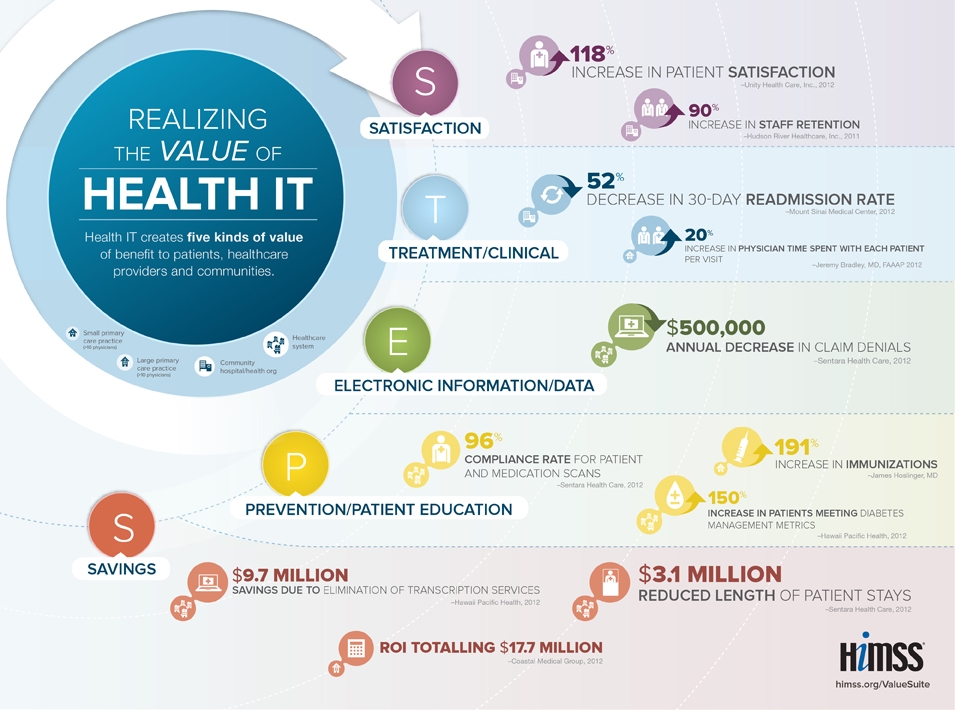This week HIMSS launched the Health IT Value Suite, a comprehensive knowledge repository that classifies, quantifies and articulates the clinical, financial and business impact of health IT investments.
The Health IT Value Suite creates a framework to quantify and discuss the impact of IT in health settings through offering relevant and credible examples that help providers, policymakers and payers evaluate the success of their IT investments and implementations with an emphasis on examining clinical, business and financial factors.
The framework, the Health IT Value STEPS™, has to-date demonstrated 56 different documented benefits of health IT across the five categories of satisfaction, treatment, electronic data/information, prevention and patient education and savings. The Value STEPS™ follow 26 different types of systems and functionalities, across 13 different types of healthcare organizations found in three types of care venues.
The infographic shown below highlights provides a visual framework of the Health IT Value STEPS:
Click image to enlarge

Background
The documented value statements in the Health IT Value Suite are collected by a systematic review of electronically-available case studies or literature references. These cases are derived from HIMSS US and international websites, US government websites including ONC, AHRQ, HRSA, and the CDC. In addition, cases are gathered from online state sites, particularly those whose Medicaid programs and Regional Extension Centers have provided details of EHR implementations. Professional associations that focus on health IT implementations, healthcare consumer oriented organizations, and vendor websites are also searched for appropriate value documentation. And, national, regional, and local news sources are also sources of cases.
As of mid-July 2013, the Health IT Value Suite has more than 500 cases of demonstrated value; not theoretical value, and not anticipated value. These first cases demonstrate value across the Value STEPS™model including approximately 85% of cases reporting improved safety, quality of care, or gained efficiencies. Increased financial, efficiency or operational savings were reported in 65% of the cases. The research team continues to locate cases for consideration in the database and as these become available they will be included in the analysis.
Visit HIMSS Health IT Value Suite for more information
